 Music
Music  Music
Music  History
History 10 Less Than Jolly Events That Occurred on December 25
 Weird Stuff
Weird Stuff 10 Funny Ways That Researchers Overthink Christmas
 Politics
Politics 10 Political Scandals That Sent Crowds Into the Streets
 Weird Stuff
Weird Stuff Ten Bizarre Facts About The Doge Meme
 Our World
Our World 10 Ways Your Christmas Tree Is More Lit Than You Think
 Movies and TV
Movies and TV The 10 Coolest Stars to Set Sail on The Love Boat
 History
History 10 Things You Didn’t Know About the American National Anthem
 Technology
Technology Top 10 Everyday Tech Buzzwords That Hide a Darker Past
 Humans
Humans 10 Everyday Human Behaviors That Are Actually Survival Instincts
 Music
Music 10 Surprising Origin Stories of Your Favorite Holiday Songs
 History
History 10 Less Than Jolly Events That Occurred on December 25
 Weird Stuff
Weird Stuff 10 Funny Ways That Researchers Overthink Christmas
Who's Behind Listverse?

Jamie Frater
Head Editor
Jamie founded Listverse due to an insatiable desire to share fascinating, obscure, and bizarre facts. He has been a guest speaker on numerous national radio and television stations and is a five time published author.
More About Us Politics
Politics 10 Political Scandals That Sent Crowds Into the Streets
 Weird Stuff
Weird Stuff Ten Bizarre Facts About The Doge Meme
 Our World
Our World 10 Ways Your Christmas Tree Is More Lit Than You Think
 Movies and TV
Movies and TV The 10 Coolest Stars to Set Sail on The Love Boat
 History
History 10 Things You Didn’t Know About the American National Anthem
 Technology
Technology Top 10 Everyday Tech Buzzwords That Hide a Darker Past
 Humans
Humans 10 Everyday Human Behaviors That Are Actually Survival Instincts
10 Absolutely Badass Anarchist Women Who Challenged The System
Throughout history, many individuals have stood firm and said, “No.” They’ve rejected the dominant dogma of the time and decided to carve their own path as they traversed and trudged through the world, forging new ideas into the zeitgeist of the era. Anarchists and other rebels serve important purposes in our societies, one of the most important being the drivers of change in the world. If the dominant ideology is never challenged, the collective progression of human thought and innovation would stagnate. And throughout the long, rich history of rebellion, many of the anarchists who have stood tall in the face of oppression were women.
When many of us hear the word “anarchist,” we instantly think of crusty punk rockers huddled in abandoned buildings, but anarchism has many faces and names that are far different from these generic, media-influenced images our brains seem to naturally conjure up. In short, the common theme under the umbrella of people who could be described as anarchists is the idea that an individual person should be in control of themselves and should not live under the dictation of others and that we as people are capable of leading our own lives, without the hindrance of overbearing rule, force, or coercion. Here are ten of history’s most badass anarchist women who challenged the system.
10 Emma Goldman
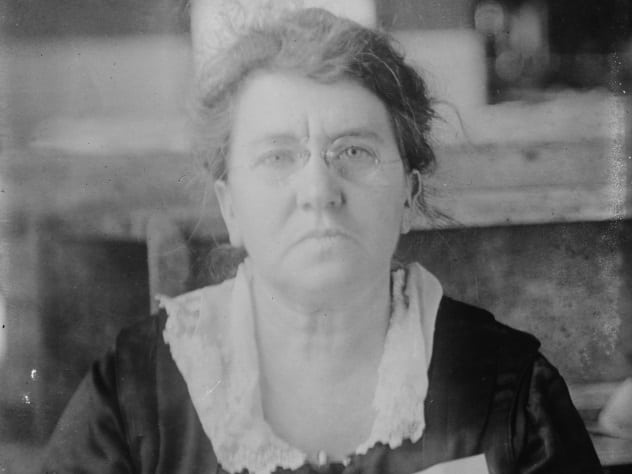
When it comes to history’s badass women, while the story may not begin with Emma Goldman, she definitely left her mark as one of the most vocal, rebellious, and militant women of all time. Born in Russia in 1869, Goldman would move to the United States and grow up to dedicate her life to forwarding the cause of the radical freedom of the individual, becoming especially militant after the hanging of several anarchist labor demonstrators in Chicago in 1886.
That year, a group of protesters took to the streets to protest for an eight-hour workday and against police brutality; the gathering was largely peaceful, until police showed up and attempted to disband the protest. At some point, a bomb went off. This debacle would become known as the Haymarket Affair. Four demonstrators were tried and executed despite a conspicuous lack of evidence, and this served as a vastly influential moment in Goldman’s life.
From here, she would fight for the right to birth control and women’s rights in general. She would be arrested and imprisoned during World War I because she protested compulsory military service for men. Goldman spent two years behind bars but remained unshaken. After her release, was deported for her protests. Yes, she was so vocal and radical for the time that she was deported for protesting.
From this point forward, Goldman lived in political exile, never really finding a “home” country to live in.[1] She traveled to Russia and experienced the Russian Revolution but became quickly angered by the authoritarianism she saw there, too—and, of course, she was vocal about it, protesting the newly formed Soviet state. In 1989, a document was uncovered in which she questioned Vladimir Lenin ruthlessly for his oppression of anarchists within the Soviet Union. Goldman left the USSR and actually registered as an anarchist, an oppressed class within the nation at the time, and was now at political war with both the USSR and the US.
She spent the rest of her years in exile, roaming and fighting for the rights of free people, and wrote in detail about her convictions. Very few people have stood up against the might of both the United States and the Soviet Union, which earned Goldman her place in history as one of the world’s most badass anarchist women. Goldman can be quoted saying, “I want freedom, the right to self-expression, everybody’s right to beautiful, radiant things.”
9 Margaret Sanger
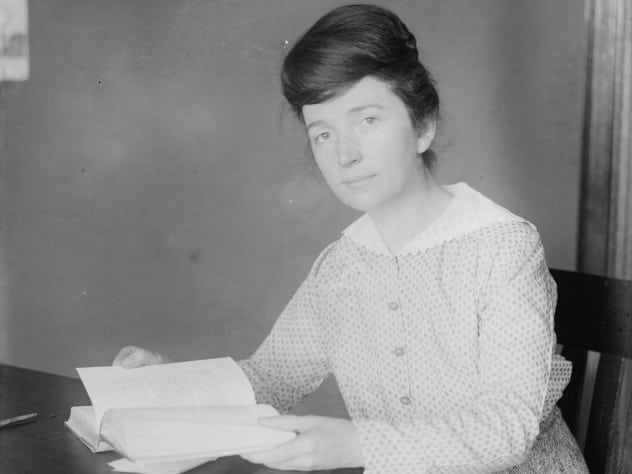
Born in New York in 1879, Margaret Sanger would become a lifelong activist and would come into contact with Emma Goldman during her life of vocal outspokenness. Sanger, too, faced the wrath of oppression for challenging the social order of the time. In 1910, she moved to Greenwich Village in New York City, which was a hotbed of political activism. There, she and Goldman crossed paths, and Sanger began protesting for various causes, such as labor rights and birth control. Sanger was actually the first person to coin the term “birth control,” which was an illegal idea at the time, and she began publishing literature in support of it. A warrant was issued for her arrest for obscenity due to the publication of her works, including sexual education literature, and she ran from the law, leaving the United States until 1915.
The charges against Sanger were dropped in 1916, and she opened a birth control clinic in Brooklyn. This time, she was charged with being a public nuisance and would serve 30 days in jail for the crime.[2] From here, she raised a lot of public support for the birth control movement, and female reproductive rights in general, and subsequently went on to not only write but to establish several organizations dedicated to the cause, as well as help influence several major court cases which lead to the legality of birth control. In one of her early publications, Sanger also coined the phrase, “No Gods. No Masters.”
8 Louise Michel
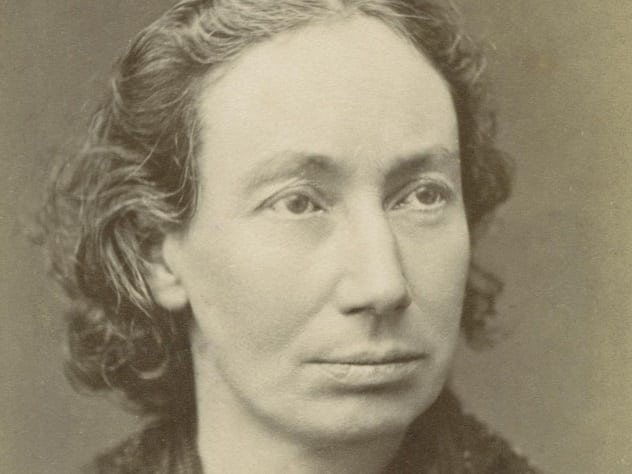
Louise Michel was a French anarchist revolutionary born in 1830. She was a teacher who also fought in combat on the front lines with the National Guard in defense of the Paris Commune. Instead of the slow and steady legal reform of political liberalism, she believed in and advocated the use of violence to prove political points. The Germans laid siege to Paris in 1870, and Michel worked as a medic with the ambulance services and aided in the repelling of the invading Prussian forces.
France was a place of political turmoil at the time, and the French government tried to disarm the Parisians who had established the Paris Commune, but Michel took up arms and fought back.[3] She would be brought up on charges, and her mother was arrested and held hostage until Louise surrendered and was sent to prison. She refused legal counsel, defending herself in court, and was sentenced to deportation and exile. Michel would then be imprisoned again on more charges, even while awaiting deportation. She ended up spending many of her future days in exile, studying and writing anarchist literature.
Eventually, the members of the Paris Commune were granted amnesty, and Michel returned to France. However, she continued to protest and fight for the rights of the individual and would yet again be arrested in 1883, and after another unsuccessful attempt at representing herself in court, she was sentenced to six years in prison. Michel continued her life in France in and out of prison, ever vocal about her opinions. She even faced an assassination attempt; she was shot by someone who didn’t like her political ideas. Michel survived and remained a revolutionary until her death in 1905.
7 Marie-Louise Berneri
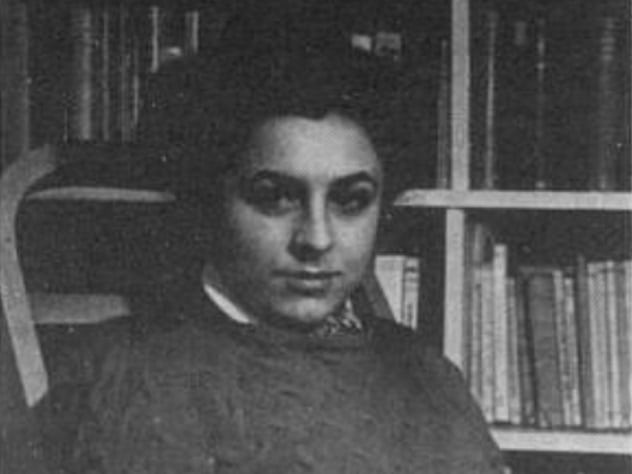
Marie-Louise Berneri was born in Italy in 1918, a time of political upheaval and radical social change, to a father who was politically controversial. This definitely rubbed off on her, as her family was forced into exile in 1926 for their steadfast resistance of the rise of Italian fascism under Mussolini. The die had been cast, and they settled in Sorbonne in France.
In the 1930s, she began the publication of anarchist papers, writing in French and editing a publication in her native Italian. War soon broke out in Spain, and her father went to fight on the front lines while she continued publication, branching out to England. Berneri was soon publishing in Spanish, English, French, and Italian; she was a literary powerhouse.
After the Spanish Civil War, she was a vital figure in caring for the children orphaned by the war. As the editor of a paper called War Commentary, she was arrested with three other editors and tried for incitement, but she was released on a technicality while the other three stood trial. But even after the threat of imprisonment, her principles and drive remained, and she continued the publication. Berneri would continue to publish anarchist work until her sudden death in 1949 from a viral infection. She was only 31.[4]
6 Madalyn Murray O’Hair
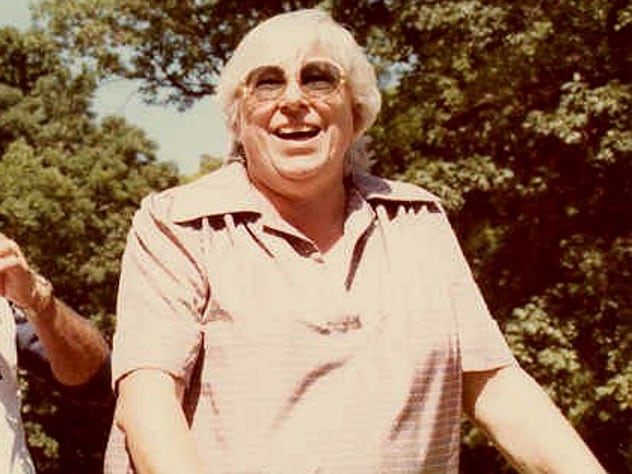
This outspoken anarchist and atheist deservedly earned the title she was given, “The Most Hated Woman in America,” for her works on atheism and her rejection of institutionalized religion as a form of oppression. She was a charismatic figure, loud, extravagant, and often intentionally obscene.
Madalyn Murray O’Hair, born in 1919, was never afraid to be expressive to make a point. She sued in court to have “In God We Trust” removed from the American currency and prayer removed from schools. In 1963, the Supreme Court of the United States sided with Murray O’Hair in a case which officially ended the reading of the Bible in public schools in the US. She would initiate tens of court cases in defense of religious freedom and would go on to proclaim herself a militant atheist and feminist, being featured in Playboy magazine speaking openly about sex from a woman’s perspective. Above all, however, Murray O’Hair was an anarchist who rejected the top-down social orders, which she felt were oppressive. She founded the American Atheists organization and continued her life of challenging the system, until a bizarre turn of events changed everything.
In 1995, Murray O’Hair, her son, and her granddaughter suddenly disappeared with an ambiguous note left on the door of the building of American Atheists. Phone calls were made by the three to the organization. They sounded distressed but insisted they weren’t in any trouble.[5] An investigation ensued and focused on the office manager for American Atheists, a man named David Roland Waters, who had a long history of violent and property crimes and actually pleaded guilty to stealing $54,000 from American Atheists. His girlfriend would testify that Waters was enraged by Murray O’Hair’s writings and had admitted to fantasizing about cutting off her fingers and toes. The O’Hairs’ credit cards were maxed out, but authorities had no bodies.
The FBI concluded that Waters worked with two accomplices, two men by the name of Danny Fry and Gary Karr, to kill the O’Hairs and steal their money, credit cards, and so on. A few days after the disappearance of the O’Hairs, Waters and Karr turned on Fry and killed him also. Karr was arrested and implicated Waters in the murders, and Waters was subsequently convicted and sentenced to 80 years in prison. He later led police to the bodies of the O’Hair family, which had been buried in Texas.
5 Lucy Parsons
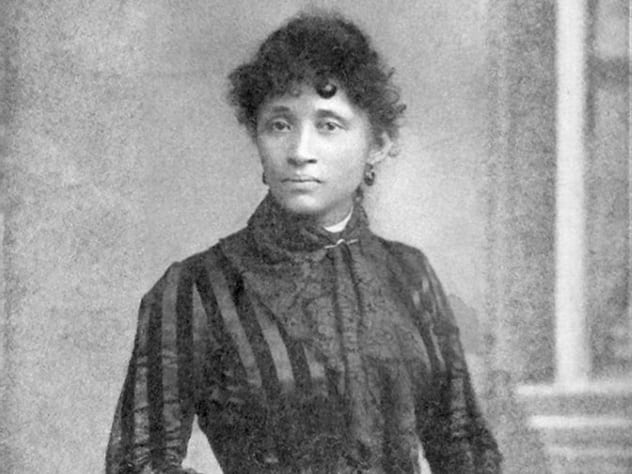
Lucy Parsons was born in Texas in 1853 and went down in history as the first nonwhite female activist in the United States. She joined many political movements and was outspoken at a time when the United States was going through the racially charged Civil War and subsequent Jim Crow era. And when it comes to radical ideas of the time, Lucy’s were definitely the most extreme, as she adamantly believed that the government needed to be entirely dismantled and capitalism destroyed . . . at all costs.[6]
Lucy continued to write and protest what she felt were racial, economic, and sexist injustices and would eventually marry a man named Albert Parsons. Lucy and Albert Parsons went on to organize a protest in Chicago in 1886, none other than the aforementioned Haymarket Affair which inspired Emma Goldman. Albert Parsons was one of the people executed for his part in the protest. Lucy Parsons would go on to fight for freedom and publish works on anarchism, becoming a figure notable for striving for racial equality in the United States.
4 Ursula Le Guin
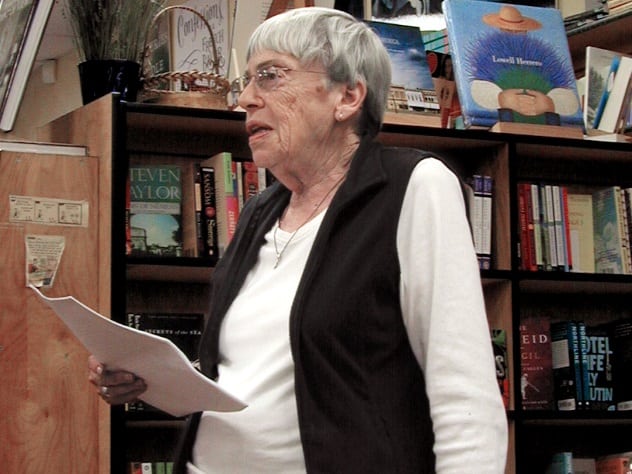
Unlike the others on this list, Ursula Le Guin’s method of preaching anarchism and her dreams of a better world were a bit more subtle: She did it through captivating novels. Largely writing science fiction and fantasy, Le Guin took her readers outside of the world of reality to analyze and criticize society through the wider lens of the unbounded possibilities of fiction.
While her works spanned a gamut of subjects, they always had the common theme of questioning the powers that be. Take, for example, 1974’s The Dispossessed, in which two societies live side by side, one the run-of-the-mill capitalist culture with the governments we live under today and the other anarchic. The Dispossessed is the tale of the members of the two societies struggling to find freedom and meaning in these different worlds they find themselves in.
LeGuin’s works thematically suggested new worlds which were possible, suggestions for the future and rejections of the current social norms. Le Guin strongly criticized blind, passive consumerism and suggested a more anarchistic way of life that wasn’t based on material obsession.[7] She passed away in January 2018 at the age of 88.
3 Alexandra David-Neel
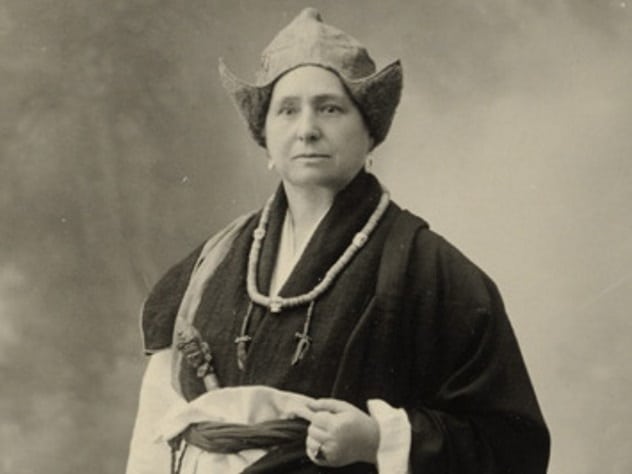
Alexandra David-Neel was a French anarchist, a Buddhist, and also an explorer. Born in 1868, she would complete over 30 works and travel the world in search of spiritual answers, rejecting the status quo and social norms of the French society she grew up in. Not only did she travel into Tibet, which was forbidden to any foreigners at the time, in search of spiritual teachings from Tibetan monks, but she lived in a cave for two years, from 1914 to 1916.
The British Empire controlled the territories around Tibet and learned that she had entered Tibet illegally. They deported her, but World War I prevented her return to Europe, and she subsequently traveled to Japan.[8] There, she met a Japanese monk who became her travel partner, and they made a 3,200-kilometer (2,000 mi) journey, some of it on foot, back to Tibet. The two disguised themselves as monks and completed their voyage into the sacred Tibetan city of Lhasa in 1924. There, she translated many of the sacred Tibetan works into French. David-Neel lived to the ripe old age of 100 and would continue to write alternative spiritual philosophy until her death.
2 Voltairine De Cleyre
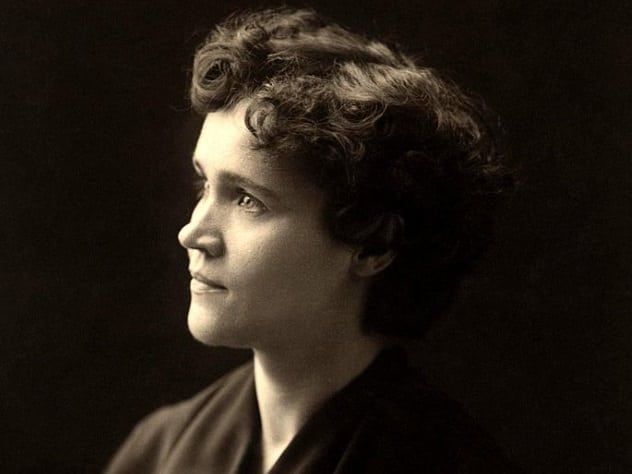
Voltairine de Cleyre was born in 1866 and was a writer who would be one of the first American anarchists to put pen to paper. She, too, was inspired to anarchism due to the Haymarket Affair and would become extremely critical of the social order of the time, the government, capitalism, and more. She was anti-marriage, anti-state, anti-government, and was against social ideals of the time which held that men and religions had the right to control women’s sexuality.[9]
On December 19, 1902, a former male pupil of hers named Herman Helcher made an attempt on her life. She survived, though she would live with pain and health issues for the rest of her days. Helcher had actually been stricken with fever and gone insane, and de Cleyre spoke in his defense, saying that his insanity was not his fault and that it was disease rather than malice which caused the attack. She spoke out against standing armies, saying they made wars more likely, and also fought against forced beauty standards on women at the time. She was an anti-state individualist through and through and staunchly fought for the rights of the individual for nearly the entirety of her life.
1 Helen Keller
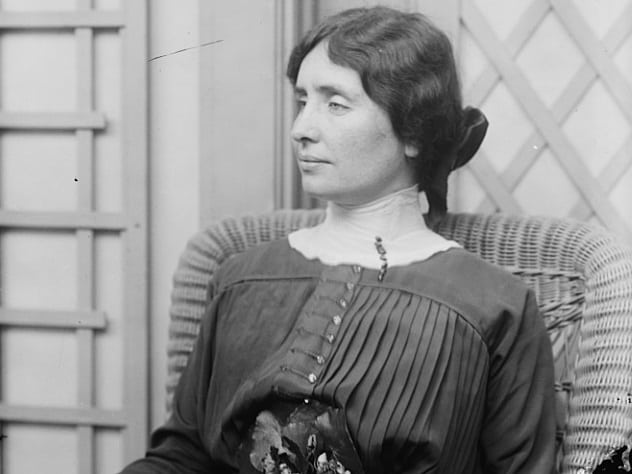
Most of us know Helen Keller for her inspiration as a writer and educator who became ill at 19 months old, rendering her both blind and deaf. But these limitations didn’t stop Keller from becoming a total badass, and an outspoken anarchist. Keller became good friends with plenty of notable anarchists of the time, including Emma Goldman, and she greatly influenced anarchist thought concerning the disabled with her own political works, which have been overshadowed by her own personal triumphs over her physical limitations.
Keller believed strongly in equality and respect for individuals and held a disdain for a society that claimed that there were poor classes who were destined to be so. Here was a woman who had been born into the most difficult situation imaginable, who had come from difficult beginnings, and who felt that her own dark world of deafness and blindness were nothing compared to what she felt were the dark injustices of the world outside. Keller would write, “My darkness had been filled with the light of intelligence, and behold the outer day-lit world was stumbling and groping in social blindness.”
She criticized the world of capitalism and commerce as producing individual misery to a degree she felt unfathomable. She criticized slavery and the political process, noting that the voice of money was louder than the voice of the people. Keller was a badass in every sense of the word, and both her writings and personal accomplishments prove that.[10]
I like to write about dark stuff and history.
Read about more exceptional women from history on 10 Incredible Women Forgotten By History and 10 Amazing Women You’ve Never Heard Of.








